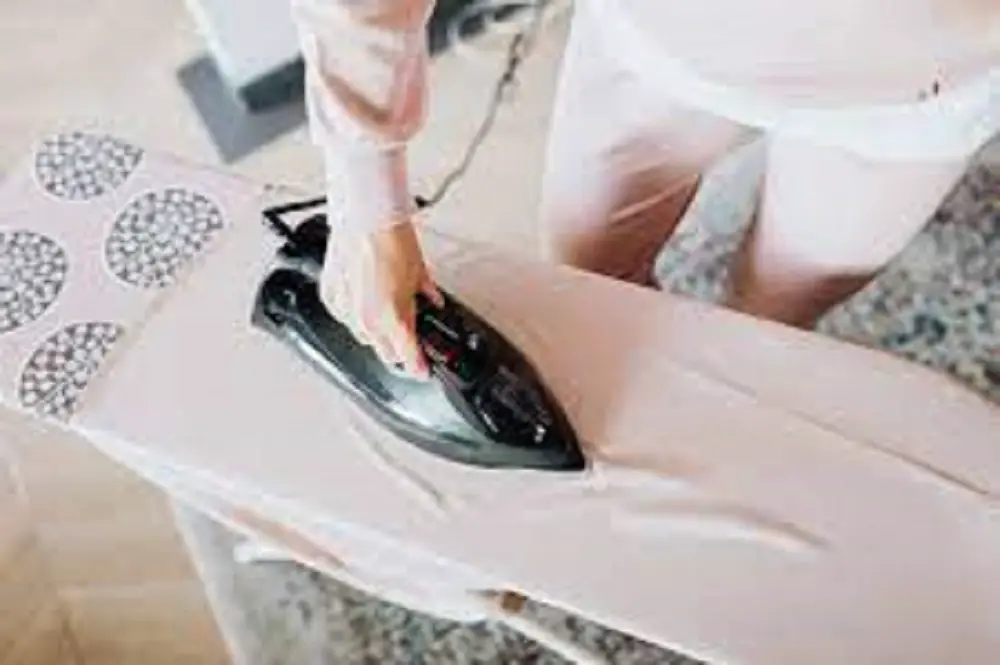Ironing can often feel like a never-ending task, especially if you have a big family or a demanding job that requires a polished appearance. Fortunately, there are practical ways to streamline this chore. In this article, we will explore how to make ironing quicker without compromising the quality of your freshly pressed clothes.

Photo from Pexels
Step 1: Pre-sort Your Clothes
When it comes to how to make ironing quicker, organization is key. Instead of randomly selecting items from your laundry basket, sort your clothes into separate piles based on fabric type.
Cottons, linens, silks, and synthetic fibers usually require different temperature settings on your iron. By organizing your clothes this way, you can iron all the items in one pile without having to constantly change the iron’s temperature settings.
This small step will not only speed up the ironing process but also reduce the risk of damaging delicate fabrics by accidentally using too high a temperature.
Step 2: Ensure Your Iron is Clean
A clean iron is essential for quick and effective ironing. Any sticky residue on the soleplate can cause the iron to drag, making it harder to achieve smooth results.
You can clean your iron’s soleplate with a cloth dampened with distilled water when the iron is cold. Some people also use a vinegar solution for deeper cleaning, but make sure to consult your iron’s manual for specific cleaning instructions.
A well-maintained iron not only makes the task quicker but also prolongs the life of your appliance.
Step 3: Use the Right Water
Tap water can contain minerals that create buildup inside your iron, affecting its performance over time. For this reason, always use distilled water in your iron’s reservoir.
This simple change can prevent clogging and ensure a consistent steam flow, both of which contribute to quicker ironing.
A consistent steam flow makes it easier to smooth out stubborn wrinkles, reducing the number of passes you have to make with the iron.
Step 4: Preheat the Iron
Starting with a properly heated iron is crucial for efficiency. An underheated iron won’t remove wrinkles effectively, forcing you to go over the same spots repeatedly.
Most irons have an indicator light that turns off when the iron reaches the selected temperature. Wait for this light to go off before you start ironing.
If your iron doesn’t have an indicator, a general rule is to wait at least five minutes after setting it to the desired temperature.
For more articles like this click here – How to Iron: Easy Guide to Mastering the Art of Ironing
Step 5: Employ Ironing Aids
Starch sprays and fabric conditioners are excellent aids to make ironing quicker. A light spray of starch on cotton shirts can make the fabric more rigid, thus easier to iron.
Fabric conditioners, on the other hand, can be added during the washing cycle to soften fibers, making them easier to iron later. However, these products are not suitable for all types of fabric, so be sure to read the labels and test a small, inconspicuous area first.
Step 6: Use Efficient Techniques
Effective ironing techniques can significantly reduce the time spent on each garment. Use quick, long strokes when ironing and always iron in a single direction to avoid stretching the fabric.
Start by ironing the edges and gradually work your way towards the center. This technique is particularly useful for items like shirts, where you can begin with the collar and cuffs and then move on to the larger surfaces.
Step 7: Hang or Fold Immediately
Once an item is ironed, hang it up or fold it immediately to maintain its freshly pressed appearance. Leaving it in a pile could lead to new wrinkles forming, negating all your hard work.
If you’re ironing a batch of clothes, have hangers or a flat surface nearby where you can immediately place each ironed item.
Frequently Asked Questions (FAQs)
Here are some frequently asked questions …
1. Can I use tap water in my iron?
While it’s possible to use tap water, it’s recommended to use distilled water to prevent mineral buildup inside the iron, which could affect its performance.
2. How often should I clean my iron?
Cleaning frequency can depend on how often you use the iron. However, a general guideline is to clean it once a month to ensure optimal performance.
3. Are fabric conditioners safe for all types of fabrics?
No, some fabrics like silk and synthetic materials may not respond well to fabric conditioners. Always check the label or do a patch test first.
4. Is it necessary to sort clothes by fabric type?
While it’s not mandatory, sorting clothes by fabric type can make the ironing process quicker and more efficient, as you won’t have to frequently adjust the iron’s temperature.
5. How can I prevent my clothes from wrinkling after ironing?
Immediately hang or fold your clothes after ironing to maintain their wrinkle-free appearance. Proper storage is also key to preventing new wrinkles from forming.
6. What type of iron is best for quick ironing?
Steam irons or steam generator irons are generally more efficient for quicker ironing. They produce more steam and maintain heat better, which can speed up the process.
7. Do I really need to preheat the iron?
Yes, preheating the iron is crucial. An underheated iron won’t remove wrinkles effectively, leading to more time spent on each garment.
8. Can I iron clothes when they are slightly damp?
Ironing clothes when they are slightly damp can actually make the process quicker, as the moisture helps to loosen the fibers, making it easier to remove wrinkles.
Conclusion: How to Make Ironing Quicker
Successfully learning how to make ironing quicker is all about preparation, technique, and using the right aids.
By following these steps meticulously, you can make a considerable difference in the amount of time you spend ironing. This will not only make the chore less daunting but also free up your time for more enjoyable activities.